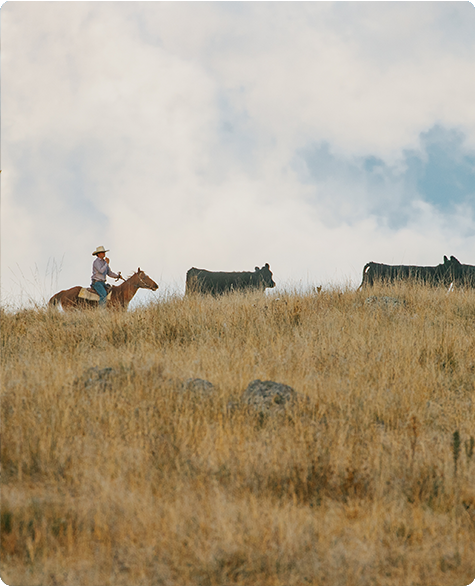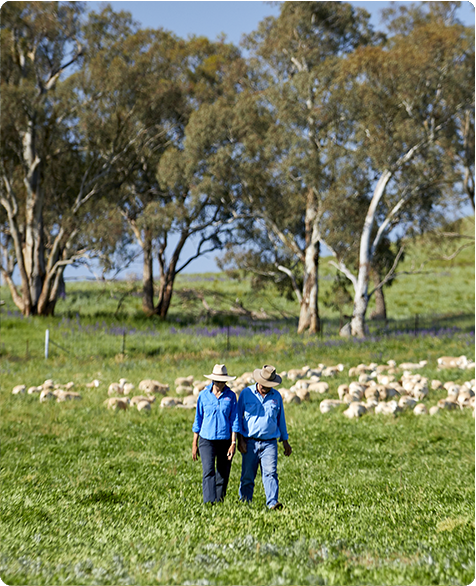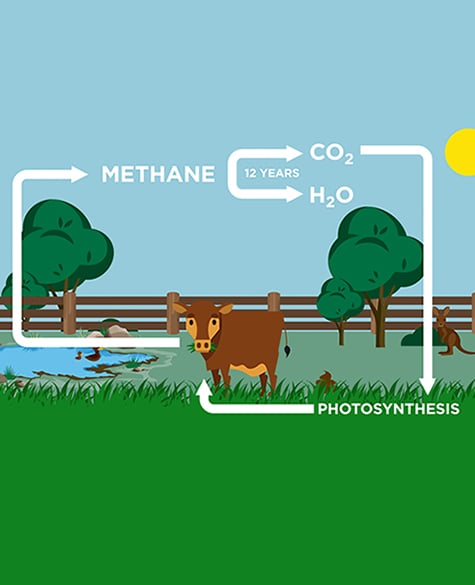Why is a carbon neutral red meat industry important?
As the interest in carbon neutrality continues to grow, more and more individuals and businesses feel a sense of urgency to take action against GHG‑induced climate change. The 2015 Paris Climate Agreement represented a milestone in the global recognition of climate change and a fossil-free future for the planet. The Agreement has a goal of limiting global warming to well below 1.5 (and preferably to 2) degrees Celsius above pre-industrial levels.
In order to achieve this target, almost 200 countries aim to reach a peak in GHG emissions as soon as possible and undertake significant efforts to combat climate change and adapt to its effects. As part of our commitment to the Paris Agreement, Australia has pledged to reduce its emissions by 26 to 28% below 2005 levels by 2030. With emissions reduction firmly on the agenda, it’s important that every industry looks at how they can be a part of the solution.
What are the benefits of carbon neutral meat?
The environmental benefits of carbon neutral red meat are clear, and so for consumers, buying Aussie red meat means buying a nutritious product that’s also good for the planet. With red meat protein recognised as such an important part of a nutritious diet, the Australian community will benefit from the industry’s focus on carbon neutrality. Our CN30 target makes us a world‑leading example of industry action to reduce emissions and cement Australia’s position as a responsible producer of high-quality natural protein. And by doing so, we’re making an important contribution to Australia’s international commitments on climate change. It’s something all Australians can be proud of.
For the Australian red meat industry itself, staying ahead of consumer expectations regarding environmental sustainability means that it can continue to build ongoing trust and support in Aussie red meat products. By taking a proactive approach to combatting climate change, our red meat producers can help ensure the long-term productivity and prosperity of the industry. From large-scale farms to family-run butchers and everyone in between, being able to provide a clean, green product is what will set us apart in a competitive global protein market.
How will carbon neutral meat be achieved?
To achieve a carbon neutral red meat future by 2030, the industry has been focused on reducing emissions from grazing management, lot feeding and processing; increasing carbon storage in soil and vegetation; and improving productivity across the industry as a whole. Specifically, these initiatives include:
- Improving animal genetics and husbandry practices (such as increasing overall herd/flock fertility and reducing the average age of animals) to reduce methane emissions
- Developing technology such as feed additives to improve livestock productivity and reduce methane emissions
- Advancing soil carbon sequestration (carbon capture and storage) methods
- Improving integration of trees and shrubs for better carbon storage, animal health and biodiversity
- Assessing new pastures, shrubs and legumes that lower methane emissions and build carbon stocks
- Developing technology to avoid methane emissions from waste management at processing facilities
- Investigating carbon storage increases from dung beetle activity in grazing lands
- Developing renewable energy technology to reduce carbon dioxide emissions from the use of fossil fuels.
In addition, the industry has been developing its measurement, reporting and verification capabilities so that progress can be monitored and shared with the community.
What has the red meat industry achieved so far?
Already, there has been significant progress towards carbon neutrality. Since 2005, the Australian red meat industry has halved its contribution to Australia’s GHG emissions. This reduction in GHG is larger than any other sector in Australia.
Carbon neutral beef and lamb are already available from some producers.
The Australian red meat industry is leading the way towards a carbon neutral future, taking action to reduce its emissions and helping Australia achieve its international commitments on climate change. As it continues to make progress, the industry is well on its way to realising its goal of a net-zero GHG emissions by 2030, and that’s an achievement that’s worth caring about.





